THE YOU SHOW
10 March 2015
It seems that The You Show is coming to its end, even if participants are invited to carry on.
It was fun to participate and it was an opportunity to experiment some new tools like Haiku Deck, AudioPaint, Text Design or SoundCloud and/or dedicate more time to some tools already used before like Audacity and Wix.
As I’m more of a visual enthusiast, it was good to dedicate time to sound, which deserved a special focus on this online course. A good quality sound makes the difference, specially supporting image (I’m more a TV watcher than a radio listener).
Looking back, and going through my artifacts I get surprised with so many pieces I’ve produced. That’s why I like to keep an e-portfolio, even if it’s not as thorough as I wished, particularly in what regards text reflections.
I, myself, forget some artifacts I’ve produced previously with certain tools, which I haven’t used for some time.
One of the last artifacts I’ve produced for this course was an alternative e-portfolio for The You Show, which is based on the collection of artifacts produced and organized in a visual way. Wix web editor has great templates and is a fine friendly tool. The Wix e-portfolio version misses the «process» dimension of an e-portfolio, but this aspect is (I hope) available in this MOOC Space.
It was an opportunity to refresh ideas on the structure of narrative and to (re)visit Kurt Vonnegut at the beginning of The You Show course.
A new MOOC is going to start soon about How Writers Write Poetry, promoted by the University of Iowa in Canvas.net, and I hope to develop a little bit more my literary writing skills.
8 March 2015
Looking for tutorials for producing Kinestic Typography, I found a few good ones on After Effects
Design rhythmic motion typograpgy in After Effects
Free kinetic typography templates for AE
10 free kinetic typography AE templates
Vimeo Kinetic Typography channel
As After Effects is a paid tool, I tried to use Powtoon as kinetic typography of a poem by William Burroughs, but there are limitations to the rotation of words
https://www.powtoon.com/show/eob1EzD7RHB/william-burroughs-thanksgiving-prayer/
6 March 2015
The Daily #ysdaily51 Artistic personalized money made in Pho.to
5 March 2015
A new version visually enhanced of my The You Show ePortfolio, made in Wix – http://idabrandao.wix.com/you-show-mooc.
I decided to organize it into four main areas: (1) image, (2) video, (2) sound and (3) text. Many of the daily challenges have promoted the creation of image/photo and sound, and I have produced a few videos and other artifacts.
We started the course with an introduction to storytelling and the structure of narrative, highlighting Kurt Vonnegut’s views.
One of the activities was to produce a story to include in TRU Writer. I’ve reproduced this story in the area of text, keeping a link to the original site.
Another area «more» was included in the menu of the ePortfolio website which includes other artifacts produced along the course, such as a Piktochart about my web presence, a Prezi with an analysis of the narrative structure of the film «District 9».
This alternative of The You Show ePortfolio is mainly visual, stripped of posts and cronological presentation – http://idabrandao.wix.com/you-show-mooc
2 March 2015
The Daily #ysdaily47 Celebrate National Pig Day
How smart are Pigs? – http://youtu.be/mza1EQ6aLdg
1 March 2015
The Daily #ysdaily46 Representation of Infinity, my image experiences:
28 February 2015
The Daily #ysdaily43 proposed 30 Second Shadow Puppet Movie, but instead I produced a short video about the history of Shadow Puppetry
Great UNESCIO video on Chinese Shadow Puppetry
26 February 2015
The Daily #ysdaily44 Write a Promo for a Random Generated Rock Band. My promo posters of «The Rock Band»
25 February 2015
A channel on kinetic typography was shared – https://vimeo.com/channels/kinetictypography and I tried to find tools to generate kinetic typography but it seems that the best tool is After Effects, with many alternative templates. However, AE is a rather complex tool to get quick results, and my trial period has expired.
24 February 2015
The Daily #ysdaily42 What question can you respond to with an answer of 42? led me to search the sci-fi book of Douglas Adams, which I was not familiar to The Hitchhiker’s Guide to the Galaxy– http://youtu.be/SZzjO4apsw4 and an extract of the film dealing with the answer to life, universe and everything.
23 February 2015
The Daily #ysdaily41 – Create a recipe for an ideal work activity
Activity purpose – to produce a video on the You Show MOOC
Ingredients:
Weekly topics (review)
Daily proposals and contributions
Tools experimented along the course
Marinate till mid March
Make it:
Produce a storyboard /a script for narration
Produce sound for the video in Audacity – narration + background music
Collect images and use photo editing tools (GIMP, Photovisi, Pho.to, etc) to remix/compose
Edit in a free video editing tool (WMM, etc)
Publish in Youtube/Vimeo and share
The Daily challenge #ysdaily39 – record the sound of an animal who lives near/with you – led me to collect free dog sounds and mixed them in Audacity, uploaded in SoundCloud, composing a Photovisi mix with free dog images.
22 February 2015
My digital story about Azulejo (Portuguese Tiles). The process to collect information and edit this video presentation:
- search in Google Images for portuguese tiles, curated in a Pinterest Board;
- some information about portuguese tiles in Wikipedia – Tiles Museum – Camões Virtual Centre – Viúva Lamego Factory;
- organization of images and text in Powtoon Slides;
- narration in Audacity – MP3 file;
- screen capture of Powtoon Slides with Screencast-o-Matic – MP4 file;
- editing of both files in Windows Movie Maker, plus music file of Vivaldi (Music Free Archive);
- creation of The End image in Photovisi, edited in WMM.
21 February 2015
The Daily challenge #ysdaily38, what your gradient colours, and I’ve tried several gradients in powerpoint
20 February 2015
The Daily challenge #ysdaily37, what my mobile saw at an exhibition of Joana Vasconcelas. I’ve recovered two short clips of two pieces at the exhibition – Chandelier
19 February 2015
The Daily challenge #ysdaily36 writing a poem about breakfast. Here’s a poor rhyme:
Breakfast is no inspiration to me,
Coffee and toast everyday,
I’m not good at poetry,
But I tried anyway.
I found a website that helps to find rhymes – http://www.rhymezone.com/
A website with many examples of digital storytelling – http://digitalstorytelling.coe.uh.edu/view_story.cfm?vid=156&categoryid=1&d_title=Art
17 February 2015
A new website with Alan Levine’s articles published in Educause was shared – http://cogdogpapers.trubox.ca/
An article on Web 2.0 Storytelling: Emergence of a New Genre took my attention.
I’ve shared in Twitter two videos – an interview by Orson Welles about the impact of The War of the Worlds broadcast in 1938 and another one about the sound effects in radio dramas.
16 February 2015
AudioPaint freeware was shared in Twitter. It can be downloaded to your computer and allows to import pictures and generate sounds.
These are my experiences, after uploading in Soundcloud:
Sounds in Wikimedia – http://commons.wikimedia.org/wiki/Category:Sounds_by_type
15 February 2015
The Daily challenge #ysdaily32 explaining Twitter to someone 100 years ago, led me to search for technology items of that time, one of the sources was the UK website of the museum of technology. I made a Google image search of technology of 1914 and a music search of old time songs. Then I compiled the information in an animation in Powtoon trying to explain Twitter in the light of old time technology.
13 February 2015
My silhouette photo for #ysdaily30, print cut feet stuck on a window
Another peer’s nice photo
12 February 2015
Exploring Audacity I produced a sound story, a remix of speeches and music on Freedom, by Martin Luther King, Malcolm, X, Emma Goldman,La Pasionara and chants of freedom by Richie Havens, Redemption Song and resistance hyms Ay Carmela and Bella Ciao.
11 February 2015
Daily Challenge: to write a blog post that uses this image as a metaphor #ysdaily28
This image suggests someone caught in a web. A barrier that can be electrified and dangerous to climb. It suggests all the walls, fences, wires in this world which won’t let people circulate freely .
It reminds me of other photos of tragic destinies, of refugees of war and refugees of poverty. It reminds me of the refugee camps. It reminds me the prison fences and school fences.
A collection of slides with photos and data from the UN Refugee Agency (UNHCR).
https://www.haikudeck.com/p/4n1b3SVUNK/refugee-camp
A peer shared in Twitter a link for Fair Use – http://ncte-ama.blogspot.pt/2015/02/fair-use-for-visual-arts-new-report.html
which includes this video – http://youtu.be/wC-wfVfIXiw – and it remindedme of another fair use video by Eric Faden, based on very short clips of Disney cartoons with a narrative on copyright and fair use – https://vimeo.com/96475769
10 February 2015
The great chilean poet Pablo Neruda saying his beautiful poem – Puedo escribir los versos mas tristes esta noche – http://youtu.be/jF79a4K9wGg and another EN version in a beautiful HD tribute – http://youtu.be/hTCMcO4WTjE
9 February 2015
Daily Challenge «sound where you are» #ysdaily27, I’ve recorded the sound of train passing near my office building, with a composed image in photovisi with Google images licenced to reuse.
I’ve searched for audio poems, namely those read by the authors themselves:
Allen Ginsberg «America» – http://www.poetryarchive.org/poem/america
W.H.Auden «As I walked out one evening (1937) – http://youtu.be/0q__Z185H8I
Ferlinghetti «Underwear» – http://youtu.be/3jz6gDVHa7Q
Billy Collins «Forgetfulness» – http://www.poetryarchive.org/poet/billy-collins
T.S. Eliot «Waste Land – What the thunder said» – http://www.poetryarchive.org/poet/t-s-eliot
Ezra Pound – http://www.poetryarchive.org/poet/ezra-pound
Herberto Helder «Minha cabeça estremece» – http://youtu.be/3IwEkkom8s4
8 February 2015
The Daily Chanllenge for #ysdaily26 was to take or share a photo related to «determination»
A few experiments with sound and effects in Audacity uploaded in SoundCloud and a few more images composed in Photovisi related to the sound themes:
An excerpt about Communities of Practice of Chapter 3 of the ebook Teaching Crowds, by Jon Dron and Terry Anderson, with a reverberating effet made in Audacity and a photovisi image with the authors photos and book cover:
An excerpt of Keri Facer’s book Learning Futures, with some effects in Audacity and background music of Puccini
7 February 2015
ShapeCollage with circa 250 images in PROFILE and CIRCLE shapes
The Daily Chanllenge for #ysdaily25 was to make a Piktochart with data on one’s web presence.
https://magic.piktochart.com/output/4434449-my-web-presence
6 February 2015
The Daily Chanllenge for #ysdaily23 was to record in one’s voice the sentence: «I will do three You Show Daily Challenges this week. But I won’t feel guilty if I don’t do three.» and compare sound waves
Ambient SoundCloud track that matches my mood for #ysdaily24 Daily Challenge
https://soundcloud.com/teither/feelings
Some Youtube channels with Free/CC Music and a tutorial how to use free music from Youtube creator features and respective music library:
Creative Commons Free Music Library
youtu.be/vyK63tiYlGI (Youtube tools, audio library)
4 February 2015
The Center of the Earth is a free music, which I have altered in Audacity and adopted as the Sounds of my Brain for #ysdaily21
https://soundcloud.com/ida-brand-o/sounds-of-my-brain
31 January 2015
Another attempt with a few lines from the epic poem Beowulf
My Medieval story, using the german application suggested
30 January 2015
My Blog wordle, copying a few posts/texts and submitting to Tagxedo online tool, choosing he shape of Peace Icomn and colour set.
My sounds in audioboom, with some of my travel souvenirs from Nepal and St. Petersburg, photos taken with my mini tablet:
Treschotka russian folk music instrument: https://audioboom.com/boos/2848044-treschotka
How it looks like the sound wave of Treschotka
Russian folk music example – http://youtu.be/cdZ-KuQRUP0
Bronze Tingsha Cymbal Nepal: https://audioboom.com/boos/2848018-bronze-tingsha-cymbal-nepal
How it looks like the sound wave of cymbal:
These are sacred artifacts for meditation – http://youtu.be/xOqJ6sUKUSU
29 January 2015
My flag for a an invented country, based on the three main colours of portuguese flag with a fist for power to the people
An interesting tool for Text Design, some examples:
28 January 2015
A more demanding challenge was set for this week: to draw or sketch on our own, after Nancy White’s intervention in this week’s video.
I admire the stories that are sketched like the famous RSA animations on conferences such as this one of Prof. David Harvey about the Crises of Capitalism – http://youtu.be/qOP2V_np2c0
I like also the doodlings of Giulia Forsythe – http://gforsythe.ca/
The ASAP Science channel is also a good and fun example, this is the behind the scenes, how these videos are produced – http://youtu.be/KAbMjI71JqY
Great posts in Brain Pickings Blog on Graphic Design – 100 ideas that changed Graphic Design
Apollinaire’s poem Il Pleut
The Capitalist Pyramid (19th century representation)
Frame your day in repeated words #ysdaily15
Four icons that came to my mind for #ysdaily14:
Che, Anonymous, Peace, Disability
27 January 2015
My photos for #ysdaily13 – Where’s the you in your kitchen? – with Pho.to
Morning coffee and my old coffee grinder
My travel magnets on my fridge
My beautiful fern hanging over the top of my fridge
26 January 2015
I decided to review the daily photos and submit some that I had only on my eportfolio – http://thedaily.trubox.ca/
I’ve produced a new image for the Daily #youshow15 Fit a Big Ambition on a Post It #YSdaily12
http://linoit.com/users/idabrandao/canvases/Retirement
25 January 2015
My searches about storytelling and poetry led me to re-visit the Beat Generation (Ginsberg, Kerouac, Burroughs, Bukovski). How disruptive they still sound 60 years later. And how good readers they were of their own poems:
Last Words, by William Burroughs – http://youtu.be/ba18JYd8XLo
All the Way, by Charles Bukovski – http://youtu.be/k6_QUhUPrF4
Howl, by Alllen Ginsberg – http://youtu.be/lM9BMVFpk80
And from the novel «On the Road», by Jack Kerouac – http://youtu.be/_MjPtem6ZbE
I watched other documentaries about these powerful personalities and I found an interesting critique to Naked Lunch famous novel by Burroughs and the film on the novel by Cronenberg – http://youtu.be/T7uN4-Wb0gQ
22 January 2015
One of the tasks suggested in Hangout was the selection of 3 images with CC licences and I’ve chosen 3 landscapes from http://commons.wikimedia.org
I’ve collected in a Pinterest CC/Public Domain images and transformed some of them in Pho.to.
21 January 2015
A new week and new proposals on telling stories with visuals.
I’ve explored many of the resources and tips about photography and an interesting Youtube channel from a professional Brian Peterson on creative photography.
I’m using my mobile phone, so there’s no sophistication in regulating a good camera. I liked the idea in this video, which has a magical result
I don’t pretend to be a photographer and my photos are very plain, but I like to try image tools and some effects. A few years ago I got pretty enthusiastic with two free MS tools – ICE (Image Composite Editor) and Autocollage (no longer free).
Mobiles and tablets have panoramic features now that make it simple to take a long photo, but ICE is more powerful and this is an example of a serious of continuous shots that were combined in ICE. The shots were taken in Republic Square in Prague, where the distance was very short from the front of the building. I liked the final result:
Most image tools have collage templates, but MS Autocollage is capable of editing a large number of photos/images, requiring a good resolution of the material, (otherwise rejects them), which grants a better collage result. This is an autocollage made of my photos at the national park of Bussaco (center of Portugal).
Suggestions for taking photos:
- Make an ordinary object look more interesting, almost supernatural
- Take a photo that makes use of converging lines
- Take a photo dominated by a single color
- Take a photo of something at an unusual angle
- Take a photo of two things that do not belong together
- Take a photo that represents the idea of “creativity”
- Take a photo that expresses a human emotion
- Take a photo that emphasizes mostly dark tones or mostly light ones.
- Make a photo that is abstract, that would make someone ask, “Is that a photograph?”
- Take a photo of an interesting shadow.
- Take a photo that represents a metaphor for complexity.
- Take a photo of someone else’s hand (or paw)
Trying some effects with Pho.to for a creative image of unrelated objects for a surreal message
Obs: This photo was taken with my mini tablet, having as background two office file dossiers (one green and one red) a glass cup where I’ve put my wireless mouse. The idea was to combine unrelated objects and get some contrast colours and transparency of glass. I have added a few effects in Pho.to free tool. I think it worked!
View from my office window:
Obs: these three photos taken from my office windows highlight, up front, my plants, adding some bubbles and written comments in Pho.to free tool.
Advice and suggestions from The You Show, after a free ebook TEN: Ten Ways to Improve Your Craft. None of Them Involve Buying Gear by David duChemin:
- Get Pickier: Instead of using your camera like a rapid fire machine gun, spend more time pre-composing in your mind. As you get more practice, you can be more selective, and more deliberate. See if perhaps you can decide before taking a shot if it will be good.
- Better Contrast Makes Better Stories Contrast can be in terms of colors and lighting, but also elements and subjects in your photos- look for things that maybe do not belong together (juxtaposition). Look for near and far perspective.
- Change My Perspective By Changing Yours: Find different and unique points of view. Look down, up, lay down on the ground, anything different from your normal view of the world at head height. Seek perspectives of lines.
- Create Depth: Look for ways to add dimension of visual depth in your 2 dimensional images- play with foreground, lines, use of wide angle lenses, use of dark backgrounds
- Get Balanced. The rule of thirds is not only about placement on a grid; duChemin describes visual mass, elements that draw more attention in a photo and how to balance that effectively. “Becoming more intentional about creating and playing with balance in your images will help you create images that more intentionally express what you have to say.”
- Pay Attention to the Moment: Sometimes it means slowing down, but also being more aware of the action in a scene, trying to anticipate the moment of something interesting before it happens e.g. watching a family at the table preparing for when baby might spill the glass of milk? at sporting events trying to be ready for the kick that scores the goal?
- Look to the light. Probably the most key lesson- be aware of light that works and what does not. Knowing about shadows, directions, aiming for directions where light is strong (or not). Good light makes every photo. Learn how to sense when light is good (and when not, and you can skip lousy shots).
- Use the Best Lens If your camera uses different lenses, understand better what a wide angle does versus a telephoto not only in terms of what it can fit in a photo, but what effect it has one photos (squashing or expanding space). If your lens is fixed, understand what its limits are (how close you can get, what happens at severe angles).
- Expose for Aesthetics Learn how to use aperture, shutter speed, iso to control the image- what the effects of these all play on depth of field, motion freeze vs blurring. For fixed lens camera/mobile, at least understand what the level of light means for your photos (why are those low light photos are blurry?)
- Put a Great Foreground in Front of a Great Background Pay attention to the near and far. A landscape scene is dull without something in foreground to give depth and scale. Learn to avoid clutter and distracting elements.
My repeated pattern taken from a file cover and framed in Pho.to
A sequence of education quotes made with Canva free images, framed in Pho.to
Posters made in Canva with remix/free images in Photovisi and framed in Pho.to
20 January 2015
This is my first experience with Haiku Deck for a 3 slideshow with my stacks of books on Education
18 January 2015
Wrap-up of UNIT 1
This first week of the course was dedicated to the shapes of the story and one of the references was Kurt Vonnegut film clip , taken from one of his lectures, with a focus on the 3 act shape of stories.
I’ve looked for other videos and interviews of Vonnegut and searched for some more articles about him and his eight basic rules for writing in this video. These searches led me to create an artifact with a collage image of his photos and quotes (in Photovisi) and a selection of links – My Thinglink on Kurt Vonnegut
I found some interesting infographics on narrative structure and elements of literature.
I decided to produce a diagram with the 3Act Shape Story and Elements of Literature and collected some definitions from Wikipedia: narrative structure – plot – setting – character – mood – tone – conflict .
Playing the good student I’ve followed the suggestions for UNIT 1 activities and produced a (i) story for Tru Writer – Grey Years at School ; (ii) produced a Prezi with the narrative structure of District 9 Film; and (iii) produced an analysis of Webquest structure in Powtoon.
A latest suggestion was made to exchange photos on one’s settings. I have exchanged some photos taken and or produced by me, namely a panoramic view made with ICE (Image Composite Editor, MS free tool) of the buildings where I work – http://share.pho.to/8eTkI . Several collages of photos from places I visited in some travels, made with Autocollage (once a free MS tool) – http://share.pho.to/8eUP2.
Another challenge suggested was the production of animated GIFs and I have produced a few with online tools like Pho.to – http://pho.to/8eLi5 and Make a GIF – http://makeagif.com/i/xAGm15
Not bad for a first week, let’s hope I can keep up with this rythm, since a new MOOC will start next week and I’ll have to invest in both.
17 January 2015
A very simple online tool – Make a Gif (with the disadvantage that it shows a gallery of porn gifs, not advisable to education purposes)
My example with photovisi images «The End» – http://makeagif.com/i/xAGm15
16 January 2015
My Photos:
Collage Vilnius – http://share.pho.to/8el78#
Biarritz – http://share.pho.to/8eTW1
Panoramic to MEC – http://share.pho.to/8eTkI
Panoramic Genoa Old Port Galleon – http://share.pho.to/8fJeq
Panoramic – Piazza di Ferrara – Genoa – http://share.pho.to/8fJmw
Panoramic Republic Square – Town Hall Prague – http://share.pho.to/8fJx2
San Sebastian – http://share.pho.to/8eU6d
Collage Bussaco – http://share.pho.to/8eUP2
Collage Hundertwasser – share.pho.to/8eUc3
Pho.to animated GIF dedicated to The You Show
Download Giffing Tool: http://www.giffingtool.com/ – Giffing tool tutorial
Online Gif Tool – http://ezgif.com/
Animated GIFs with licence to reuse:
14 January 2015
This week was introduced the first Unit on the shapes and structure of stories. Some proposals of activities were presented:
UNIT 1 – http://youshow.trubox.ca/about/schedule/unit-1/
Activity 1: Analyze a story’s shape
- My choice: District 9 picture
Activity 2: Analyze your own communication shape
- Email shape? a syllabus? a lesson plan? a research paper? a conference presentation?
- My choice: Webquest
Activity 3: Expand Your Web Writing With TRU Writer (http://splot.ca/writer/ – access code: tru writer)
- Header image
- Copy the contents of anything you have written in a Word Processor, or already published on a web page, paste it into the TRU Writer editor
- You can then edit/augment your work using a rich text editor, including embedding content from social media sites, and you can upload new images to be included within the text of your writing.
My 3 act story shape and literary elements diagram
Literary elements definition:
A literary element is an inherent constituent of all works of narrative fiction—a necessary feature of verbal storytelling that could be found in any written or spoken narrative. This distinguishes them from literary techniques, or non-universal features of literature that accompanies the construction of a particular work rather the necessary characteristics of all narrative. For example, plot, theme, and tone are literary elements, whereas figurative language, irony, or foreshadowing would be considered literary techniques.( http://en.wikipedia.org/wiki/Literary_element )
- Narrative structure – is aliterary element, generally described as the structural framework that underlies the order and manner in which a narrative is presented to a reader, listener, or viewer. The narrative text structures are the plot and the setting. Generally, the narrative structure of any work—be it a film, play, or novel—contains a plot, theme, and resolution. It can also be divided into three sections, which are together referred to as the three-act structure: setup, conflict, and resolution. The setup (act one) is where all of the main characters and their basic situations are introduced, and contains the primary level of characterization (exploring the character’s backgrounds and personalities). A problem is also introduced, which is what drives the story forward. The second act, the conflict, is the bulk of the story, and begins when the inciting incident (or catalyst) sets things into motion. This is the part of the story where the characters go through major changes in their lives as a result of what is happening; this can be referred to as the character arc, or character development. The third act, or resolution, is when the problem in the story boils over, forcing the characters to confront it, allowing all the elements of the story to come together and inevitably leading to the ending. (http://en.wikipedia.org/wiki/Narrative_structureI )
- plot – is a literary term defined as the events that make up a story, particularly as they relate to one another in a pattern, in a sequence, through cause and effect, how the reader views the story, or simply by coincidence. One is generally interested in how well this pattern of events accomplishes some artistic or emotional effect. An intricate, complicated plot is called an imbroglio, but even the simplest statements of plot may include multiple inferences, as in traditional ballads. http://en.wikipedia.org/wiki/Plot_(narrative)
- setting – in works of narrative (especiallyfictional), the literary element setting includes the historical moment in time and geographic location in which a story takes place, and helps initiate the main backdrop and mood for a story. Setting has been referred to as story world or milieu to include a context (especially society) beyond the immediate surroundings of the story. Elements of setting may include culture, historical period, geography, and hour. Along with the plot, character, theme, and style, setting is considered one of the fundamental components of (http://en.wikipedia.org/wiki/Setting_(narrative) )
- character – Acharacter (or fictional character) is a person in a narrative work of arts (such as a novel, play, television series or film). Derived from the ancient Greek word kharaktêr, the English word dates from the Restoration, although it became widely used after its appearance in Tom Jones in 1749. From this, the sense of “a part played by an actor” developed. Character, particularly when enacted by an actor in the theatre or cinema, involves “the illusion of being a human person. In literature, characters guide readers through their stories, helping them to understand plots and ponder themes. (http://en.wikipedia.org/wiki/Character_(arts) )
- theme – In contemporaryliterary studies, a theme is the central topic a text treats. Themes can be divided into two categories: a work’s thematic concept is what readers “think the work is about” and its thematic statement being “what the work says about the subject”.
- mood -is one element in the narrative structure of a piece of literature. It can also be referred to as atmosphere because it creates an emotional setting enveloping the reader. Mood is established in order to affect the reader emotionally and psychologically and to provide a feeling for the narrative. It is a complex reading strategy. (http://en.wikipedia.org/wiki/Mood_(literature) )
- tone -is a literary compound of composition, which encompasses the attitudes toward the subject and toward the audience implied in a literary work.[1] Tone may be formal, informal, intimate, solemn, somber, playful, serious, ironic, condescending, or many other possible attitudes. (http://en.wikipedia.org/wiki/Tone_(literature) )
- point of view (1st person/3rd person point of view)
- conflict – Inliterature, the literary element conflict is an inherent incompatibility between the objectives of two or more characters or forces. Conflict creates tension and interest in a story by adding doubt as to the outcome. A narrative is not limited to a single conflict. While conflicts may not always resolve in narrative, the resolution of a conflict creates closure, which may or may not occur at a story’s end. (http://en.wikipedia.org/wiki/Conflict_(narrative) )
Other resources with definitions of literary elements:
http://www.kareyperkins.com/classes/420/litelements.pdf
http://education-portal.com/academy/lesson/literary-elements-definition-types-examples.html
http://edtech2.boisestate.edu/weltys/502/conceptmap.html
An infographic on Elements of Literature

Elements of Literature
Activity 1 – District 9 analysis – Narrative structure – PREZI
Activity 2 – Analysing Webquest structure – https://www.powtoon.com/show/bbBTQxGvzfj/webquests/
Activity 3 – My Story -Grey Years at School – http://splot.ca/writer/?p=222preview=true
13 January 2015
I enjoyed this first episode course video and the tribute to Kurt Vonnegut humourous presentation on the shapes of stories
I read «Slaughterhouse Five» in the late 70’s as well as a few more literary american works like Catch 22 and One Flew Over the Cuckoo’s Nest and I was quite impressed.
Vonnegut’s work raised awareness for the unneccessary destruction Allies have also inflicted. Dresden was one of those examples and I think the atom bombs over Hiroshima and Nagazaki were excessive and a criminal act as well. There must be some limit for barbaric attacks, even before the atrocities of Nazi Germany and Imperial Japan…
But let us remind Vonnegut’s 8 basics of creative writing:
- Use the time of a total stranger in such a way that he or she will not feel the time was wasted.
- Give the reader at least one character he or she can root for.
- Every character should want something, even if it is only a glass of water.
- Every sentence must do one of two things—reveal character or advance the action.
- Start as close to the end as possible.
- Be a sadist. No matter how sweet and innocent your leading characters, make awful things happen to them—in order that the reader may see what they are made of.
- Write to please just one person. If you open a window and make love to the world, so to speak, your story will get pneumonia.
- Give your readers as much information as possible as soon as possible. To heck with suspense. Readers should have such complete understanding of what is going on, where and why, that they could finish the story themselves, should cockroaches eat the last few pages.
My Thinglink on Kurt Vonnegut – http://www.thinglink.com/scene/611518002382241794

Infographic
11 January 2015
I’ve been following The You Show Twitter community and looking at some of the links posted by peers.
Christina Hendricks, a philosophy teacher at the University of British Columbia, has produced in her blog a long post on Nietzshe. I’m becoming more and more interested in philosophical perspectives, because our educational system is getting more and more influenced by market purposes and the focus on certain areas of science and technology is somehow subverting the importance of humanities and leaving HE institutions in a fragile situation to sustain courses on classical culture.
Philosophy is «the love for wisdom» and to quote from Wikipedia:
«Philosophy is the study of general and fundamental problems, such as those connected with reality, existence, knowledge, values,reason, mind, and language. Philosophy is distinguished from other ways of addressing such problems by its critical, generally systematic approach and its reliance on rational argument. In more casual speech, by extension, “philosophy” can refer to “the most basic beliefs, concepts, and attitudes of an individual or group”»
And philosophy is a ground basis for science, to learn how to question and to think deeply.
I think that this trend of ranking areas of knowledge, those useful to have a prosperous career and earn good money, is misleading what education should be about. As Chomski refers education should provide context for freedom of choices, learning for inquiry, learning according one’s interests, providing space for creativity, rather than being indoctrination and control by the establishment to accept conformity and being trained for standardized tests.
I suppose that the education system should provide opportunities and have a wide range of offer to accomodate the diversity of students’ interests and let them engage and flourish.
In these last years I have been revisiting what I call, in a broad sense, alternative education, that breeds on a common basis of student centred learning, in many multifaceted approaches that date back to previous centuries. The Prezi I made (in portuguese but with many quotes and videos in english) on this subject includes some of its advocates and some examples of schools that follow different paths of traditional schooling.
I suppose it’s time that these approaches gain some visibility and may be shared in an open way, so that we escape the mainstream idea of perpetuating the same old system.
I was very glad to see some texts on education collected as biblography in another MOOC I’m enrolled in – eLearning Ecologies (New Learning) – it’s refreshing to read them: i.e. Froebel, Rousseau, Montessori, Dewey, Piaget, Vygotsky, A.S.Neill , Paulo Freire, Ivan Illich, Malaguzzi. I would suggest also Freinet, Ferrer Guardia, …
Other contemporary advocates of an alternative education are included such as Alfie Kohn and Ken Robinson. Other progressive viewpoints by David Harvey, Peter MacLaren, Habermas, Michael Apple, Lave and Wenger, Howard Gardner, Bruner. Many other authors and texts are included in this long list worth exploring. These texts are just a starting point to explore deeper the work of each one of them. A Thinglink I made with a few more links to some of them.
8 January 2015
My first comment about ePortfolios in the CogDogShow blog:
I suppose that the traditional «portfolio» concept is much related to the arts and graphical design. But I’m an advocate of e-portfolios in education and have been promoting them for some years, not so many as prof. Helen Barrett – http://www.electronicportfolios.org/ – which was an inspiration for me.
Like you refer portfolios can take many purposes and shapes. It can be a portfolio for career development and employment (a sort of documented curriculum vitae), can be a way to show evidence of learning progress, to structure knowledge and artifacts along a course.
Some ideas about eportfolios collected in a short video I made in portuguese.
The web tools we can use are diverse. As I’ve been participating in several MOOCs, since 2012, I decided to create my own MOOC Space, which may be considered an eportfolio of MOOCs. So I keep opening pages for each MOOC and it works as a blog with the collection of artifacts and resources I gather, eventually with some short or longer posts. I suppose I could elaborate a bit more the texts, but what generally happens is that I put many more hours and invest in the production of artifacts, trying new tools. As the MOOCs have their own space for comments and discussion forum I tend to disperse the comments in the different areas of social media. I suppose this is one of the big issues when one starts interacting in so many platforms and get some feeling of net labyrinth. Quite confusing for newcomers.
At present I’m participating in «The You Show» and «eLearning Ecologies». The last MOOCs I’ve been involved were: «Digital Cultures», «HandsonICT»», «Philosophy &Film». A quick overview of my experiences with MOOCs (till the end of 2014) in this Powtoon.
I think that e-portfolios should become mainstream for learning assessment purposes, focusing on formative approaches rather than summative, exams and standardized tests.
The online training I’ve organized starts by asking participants to organize course eportfolios. I think that beyond the certification purposes, it’s a way each participant take charge of their personal virtual space to revisit later on. It’s a collection of experiences that may be useful, when we search for something interesting that we’ve learnt or have produced. I also find very atractive the diversity of tools used by participants, how they structure their virtual spaces. A collection of some eportfolios from an online course on inclusion – http://edu.symbaloo.com/home/mix/13ePGWddZW
7 January 2015
New MOOC starting 12 January 2015
http://youshow.trubox.ca/
Twitter – #youshow15
Canadian initiative that aims at:
«The You Show is for people interested in (a) creating sharable portfolios of their work; (b) communicating or mobilizing information about their work to a general audience; or (c) improving their digital media skills.»
…
«This will be a hands-on, participatory experience. We will guide you through eight weeks of practical skill-building, mixed with what we hope will be examples of inspirational work and reflections. The goal is to create a public facing representation of yourself or your work, as well as the narrative of the thinking behind it.»
RSS feed – https://idabrandaomooc.wordpress.com/feed/
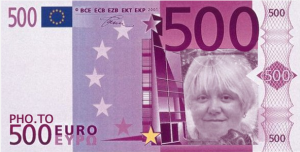
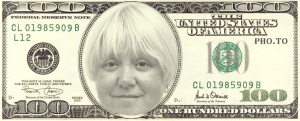
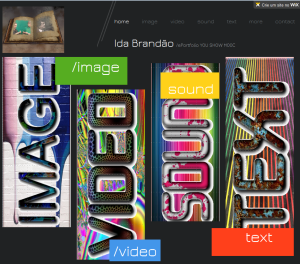
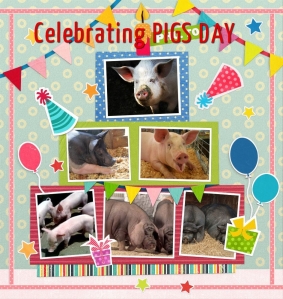
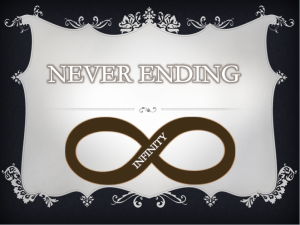
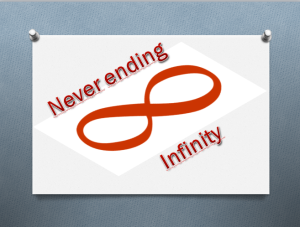
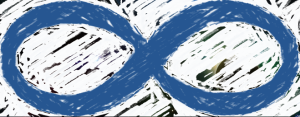
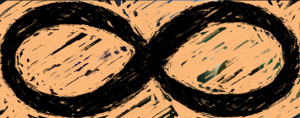

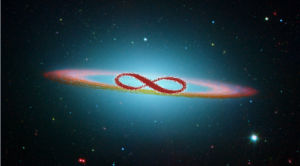
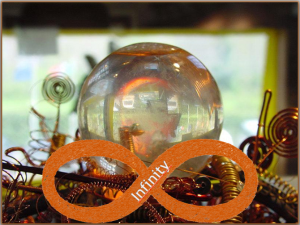
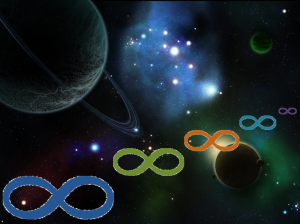
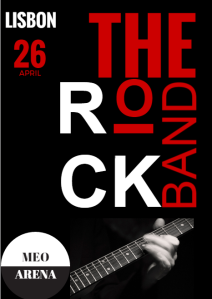
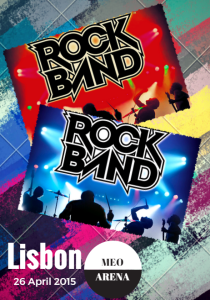





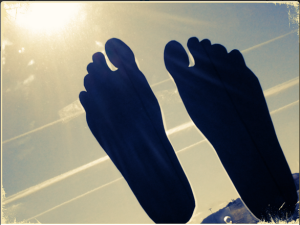
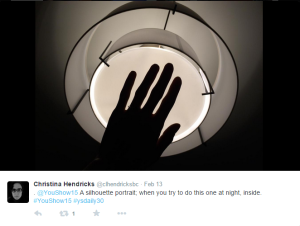
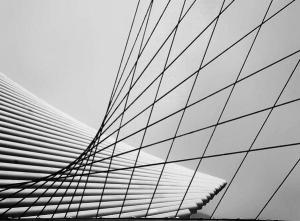

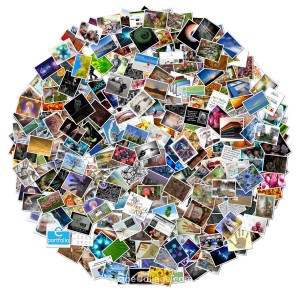



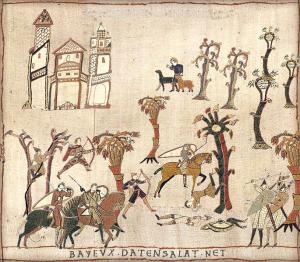
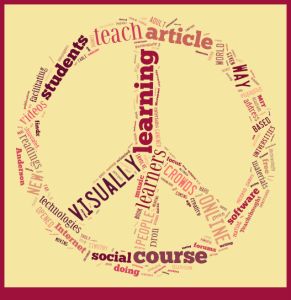
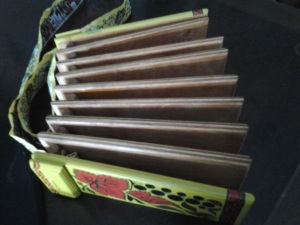




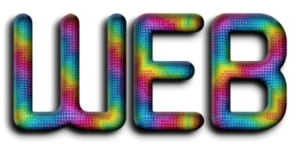

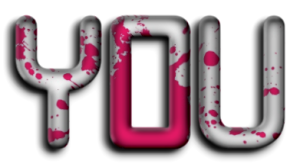
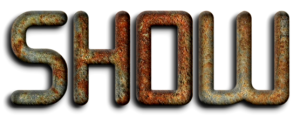

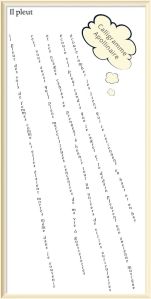


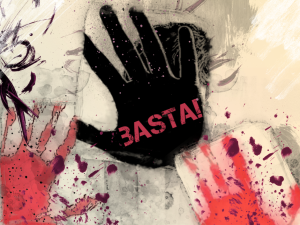
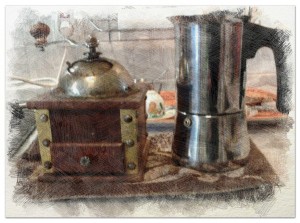
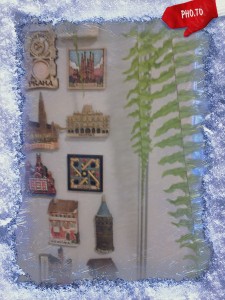
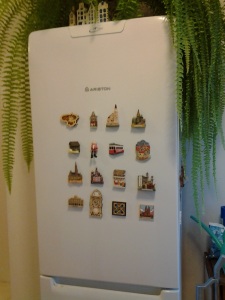

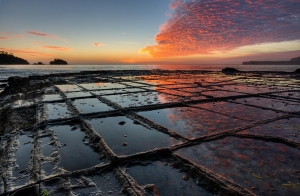

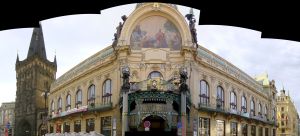
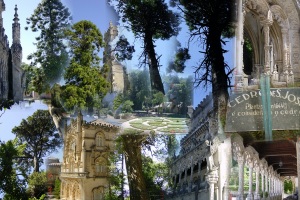
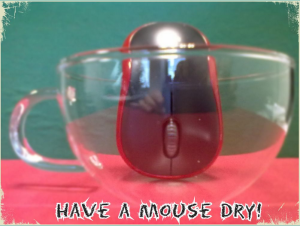
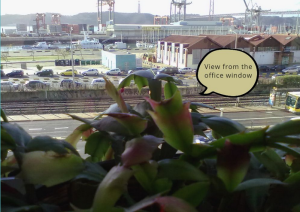
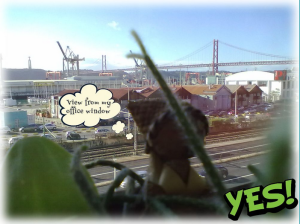

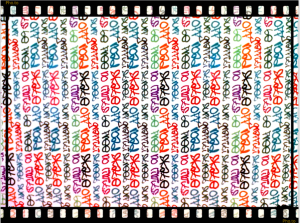
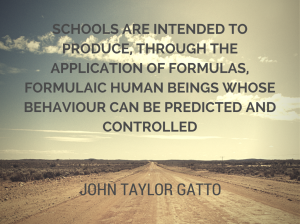

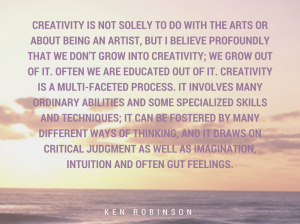
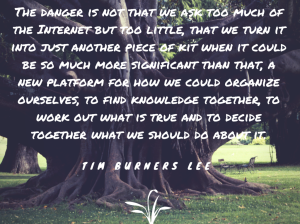
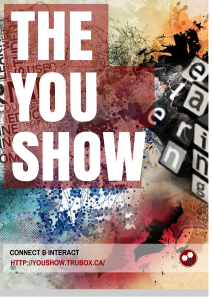
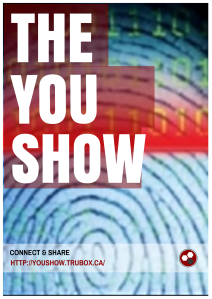
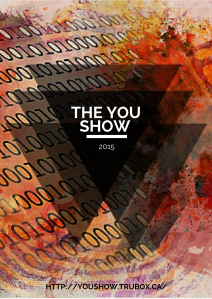
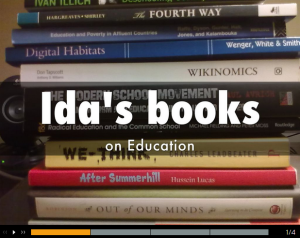


.gif)



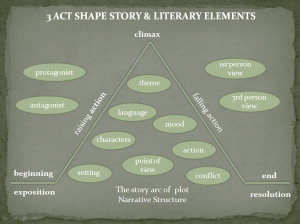
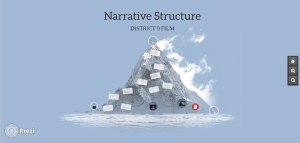

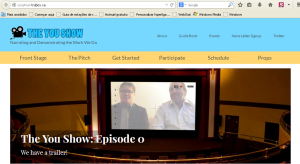
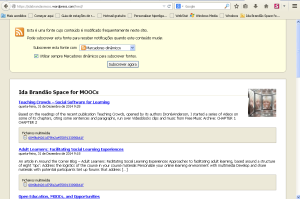
Hello Ida and thanks for contributing these resources and ideas about eportfolios. Like you I’ve been following Helen Barrett a long time, even in the 1990s I think she was referring to herself as the “grandmother of eportfolios”.
I’m curious if when you ask participants do their experience portfolio-ing if they see it of value for their own sake, rather than a requirement or suggestion from the course leader (e.g. do they develop their own motivation).
And I hope you add your blog to the You Show roster where we are aggregating blog posts, we have a signup form just activated at http://youshow.trubox.ca/signup
Thanks for your feedback and the alert to fill the form. I had filled some other form and thought I was already enrolled.
I had the opportunity to participate in a conference, in Portugal, a few years ago, where Prof. Helen Barrett was a keynote speaker on the topic of Portfolios. At the same conference another theme on PLE was addressed by Graham Attwell – http://www.pontydysgu.org/
My experience with online courses is not a long one, since I’m not a teacher. I’m a civil servant at the Ministry who has been involved in ICT programs for schools since 1995 and, at present, coordinates and supports a small community a teachers (circa 55) around the country who have a specific mission of assessing SEN students’ needs for technologies (namely assistive technologies) for learning. This network is supported by a Moodle platform (run by me at the Ministry) which helped to constitute a community of practice, consolidating since 2007. The online training that has been organized is run on a peer learning basis, with the collaborating of some of them as facilitators as well. My concerns are to be clear from the start what to expect, so there are no misunderstandings and people don’t feel frustrated. I usually provide a guideline of the course (detailed one) at the moment of ´sign-up’ and the introductory topic/module is to read it and create/structure an e-portfolio. If people already have a virtual space and wish to use it, they only have to structure a specific area for the course. Regarding newcomers,those that are not so proficient with web tools may find it demanding and time consuming but it’s an important step, to gain autonomy. I also think that people get more enthusiastic when they gain these skills, and produce something that can be shared with others. Then, it’s a matter of practice and the routine leads to exploring other tools that may be useful for their practice. I think that the e-portfolio requirement turns to be appropriated by participants and it’s an alternative way to organize one’s work and a memory that one revisits whenever necessary.
I think it is useful to structure and organize oneself and give some meaning to one’s learning. Many online courses don’t remain open (as you know) and it’s safer for each one to keep and manage one’s work on one’s own space.
We’ve run a MOOC on Inclusion and Technology in 2014 – http://inctec2014.blogspot.pt/ – which was totally built on open tools (Blogger, Google tools) and for certification purposes (which remains important for many teachers, though not for me), the condition was to organize an e-portfolio with certain requirements. We’ve gathered all e-portfolios in Blendspace and collected the certified one’s in a Symbaloo (ex: http://edu.symbaloo.com/mix/moocinctece-portefolios)
Hi Ida:
I couldn’t agree more with your post about education. The course for which I did the Nietzsche lecture and post is a year-long, team-taught, interdisciplinary course for first year students that explores literature, history and philosophy. We often read and discuss things that one can’t easily directly link to a specific career, but that are useful for provoking critical thought about difficult and abstract issues. Students go in all sorts of directions after taking that course their first year, because we provide a grounding that is useful for many other pursuits. If you can read carefully, engage in thoughtful and respectful conversation, and write clearly (all the things we emphasize in the course), these are skills you can use in many different areas of your life later. I think these sorts of courses are crucial! But sometimes it’s a hard sell to people who think that education must be only training in specific skills that one can directly link to a particular career path (like business, or engineering, or computer science).
Dear Christina,
I think that with the access to Internet and open learning we need to turn to a more «renaissance spirit», everything is interconnected and we can’t go on learning according to «discipline drawers». In school we keep the 45 minute time for each discipline controlled by ringbells. It’s like John Taylor Gatto says:
«…the institution (school) is psychopathic – it has no conscience. It rings a bell and the young man in the middle of writing a poem must close his notebook and move to a different cell where he must memorize that humans and monkeys derive from a common ancestor.»
Many authors have addressed this problem, such as Edgar Morin in his UNESCO publication «Seven Complex Lessons for the Future»(1999) considering a global world, complex and multidimensional:
«The education of the future is faced with this universal problem because our compartmentalized, piecemeal, disjointed learning is deeply drastically inadequate to grasp realities and problems which are ever more global, transnational, multidimensional, transversal, polydisciplinary and planetary.»
I’ve just copied my last post – Wrap up Unit 1 to CogDogBlog, but most of the links are missing from the original post. Nontheless, I hope it works.